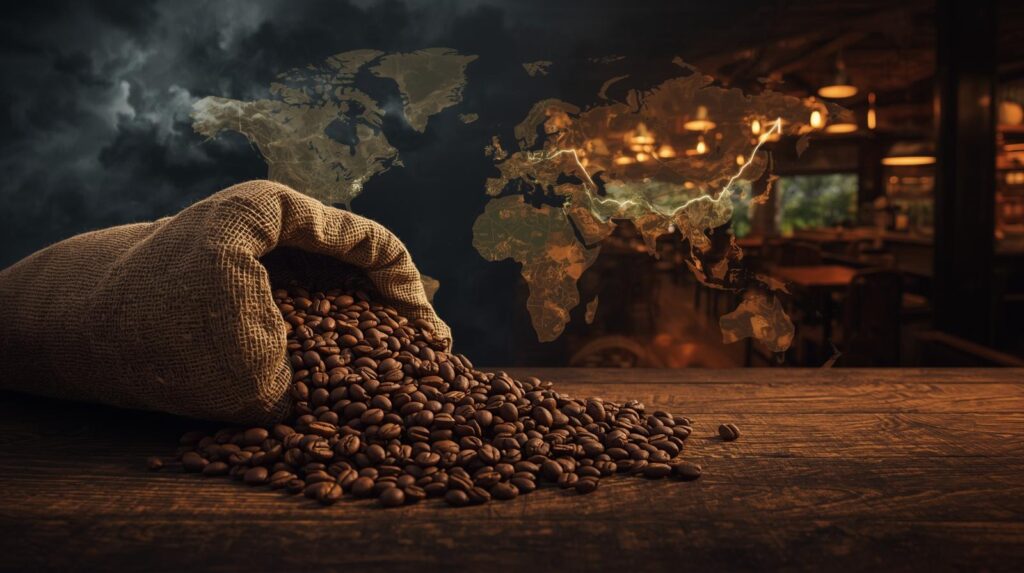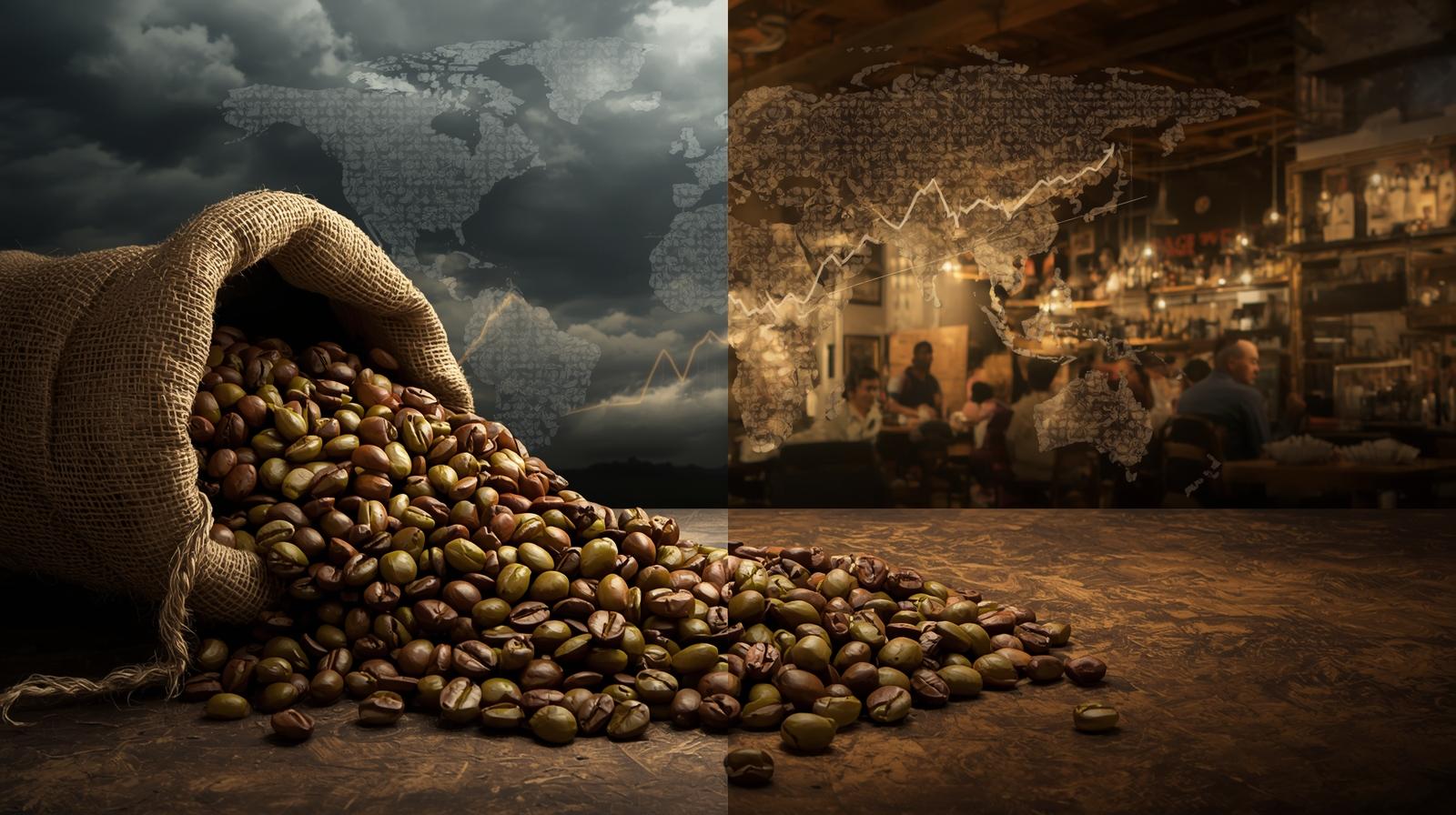Introduction
If you’re wondering why your morning coffee feels a little pricier lately, you’re not imagining it. Coffee prices have been spiking, and one of the biggest reasons is something most people never even think about: ICE inventories. That’s short for the Intercontinental Exchange certified stockpiles of green coffee. These inventories act like the world’s backup supply, and right now, they’re running low.
Actually, it’s a pretty simple chain reaction. When there’s less coffee sitting in ICE warehouses, traders get jittery. That nervous energy shows up in higher futures contracts, and eventually, in the price of your latte. But the good news is, understanding why this is happening gives us some clarity—and maybe a hint of where prices could go from here.

Let’s dig into what’s really going on behind the scenes.
What Are ICE Inventories, Anyway?
Think of ICE inventories as the safety cushion for the global coffee market. Roasters, traders, and even investors keep an eye on how much coffee is stored at ICE-certified warehouses. When stocks are healthy, everyone relaxes. But when they shrink, the market assumes there’s tighter supply, which pushes prices up.
In fact, inventories have fallen so low that analysts are calling them “dangerously thin.” That phrase matters because, without that buffer, any hiccup in production—say, a drought in Brazil or transport delays—hits the market much harder.
So what happens is: less supply in ICE = more anxiety in the market = higher prices for you and me.
Global Coffee Supply Faces Challenges
The problem is, ICE inventories aren’t shrinking in isolation. Global production itself is facing hurdles.
- Brazil, the world’s largest producer, has been battling unpredictable rainfall patterns. Too much or too little rain can hurt coffee cherries, reducing yields.
- Colombia, another key supplier, has seen climate change disrupt growing cycles. Shifts in temperature and rainfall have thrown farmers off their normal rhythm.
- Central America continues to struggle with pests like coffee leaf rust, which eats away at crops.
Add in the fact that shipping is more expensive these days—thanks to rising freight rates and port congestion—and it becomes clear why traders are nervous.
Demand Isn’t Slowing Down
Here’s the twist: demand for coffee hasn’t dropped one bit. If anything, it’s stronger than ever.
Since the pandemic, people have gotten used to brewing high-quality coffee at home and splurging at cafes. In fact, global coffee consumption has been rising steadily, with younger consumers treating specialty coffee almost like craft beer—something to explore, experiment with, and pay extra for.
So you’ve got tighter supply on one side and steady (or growing) demand on the other. That’s the classic recipe for higher prices.
Coffee Price Drivers in a Nutshell
To keep it super simple, here’s a table that shows what’s driving prices right now:
| Factor | What It Means for Prices |
|---|---|
| Tighter ICE Inventories | Less safety stock → traders pay more |
| Brazil Weather Problems | Smaller harvests → global supply shrinks |
| Colombia Climate Shifts | Production disruptions → reduced exports |
| Shipping & Logistics Costs | Adds extra cost per pound of coffee |
| Steady Global Demand | Keeps upward pressure on futures |
It’s like a perfect storm. Each factor alone could cause price bumps, but together, they’ve created the sharp spike we’re seeing in 2025.
How This Hits Consumers
You know, it’s one thing to read about inventories and futures contracts, but what does it mean for regular coffee drinkers?
- At the café: Expect small but noticeable increases in the cost of espresso drinks. A $4.50 cappuccino might become $5.
- At the grocery store: Packaged coffee prices may rise slower because big retailers often hedge contracts, but eventually, they’ll pass costs along.
- For businesses: Coffee shops and restaurants with thin margins may struggle more, especially independent ones.
Actually, some cafés have already started experimenting with smaller cup sizes or premium “surcharge” options for specialty beans. It’s their way of balancing customer expectations with rising costs.
The Bigger Picture: Coffee as a Global Commodity
Here’s something interesting: coffee isn’t just about your morning brew. It’s one of the most traded commodities in the world. And like oil or wheat, it reflects global economic forces.
Investors have been paying more attention to coffee futures, treating them almost like a hedge against inflation or currency risk. The stronger U.S. dollar has made it pricier for other countries to buy coffee, which complicates things even further.
And because coffee-growing nations rely heavily on exports, price swings also affect their economies. For example, Brazil’s trade balance, Colombia’s rural income, and even Central America’s job market are tied to the fate of coffee.
The Digital Parallel: Why Tracking Matters
Now, you might be thinking, what do things like 8171, web portal, CNIC check, payment tracking, online confirmation, latest method have to do with coffee?
Here’s the link: it’s all about real-time transparency. Just like citizens use web portals to check their CNIC numbers, confirm payments, or track aid through the 8171 program, coffee traders and companies rely on advanced online platforms to track inventories, shipments, and harvest reports.
The latest method of dealing with volatility is not just financial hedging—it’s about better tracking and faster information flow. When data lags, uncertainty rises. And when uncertainty rises, prices often spike.
So, in a weird way, your ability to confirm a payment online is a lot like a trader’s ability to confirm a shipment of coffee beans. Both systems reduce anxiety. Both keep the chain moving. And both matter for the final outcome.
Lessons for Investors
For investors watching coffee markets, there are a few takeaways:
- Volatility is the norm. Coffee prices move fast, especially when inventories are tight.
- Climate risk is real. Weather patterns are reshaping supply chains.
- Digital transparency helps. Platforms that track supply in real-time may help stabilize pricing.
- Demand isn’t going anywhere. Even with higher prices, coffee is a “sticky” habit.
Actually, many investors are starting to see coffee not just as a commodity but as a cultural staple with reliable long-term demand. That doesn’t eliminate short-term pain, but it adds confidence about the future.
Final Words
Coffee prices are spiking, and the reason boils down to a shrinking safety net—tight ICE inventories—combined with weather challenges, rising logistics costs, and relentless global demand. It’s a reminder that coffee isn’t just a cozy ritual; it’s a global commodity shaped by economics, climate, and human behavior.
For consumers, it means higher café bills. For businesses, it means adjusting strategies. And for investors, it means keeping a sharp eye on supply-chain data.
At the end of the day, coffee might feel like a simple cup, but behind it is a whole world of complexity. And right now, that world is pushing prices higher.
FAQs
1. Why are coffee prices rising so fast in 2025?
Because ICE inventories are shrinking while demand stays strong. Weather and shipping costs add pressure.
2. How do ICE inventories affect the market?
They act like a backup supply. When low, they trigger nervous buying and higher prices.
3. Will coffee prices keep going up?
If Brazil and Colombia don’t recover harvest volumes soon, prices may stay high through 2025.
4. How does this affect regular coffee drinkers?
Expect café drinks and grocery coffee to cost more. Some shops may also tweak cup sizes or menu pricing.
5. Can digital tracking really help stabilize the market?
Yes. Just like payment tracking or CNIC checks improve transparency, real-time coffee data helps reduce uncertainty.

Leave a Reply